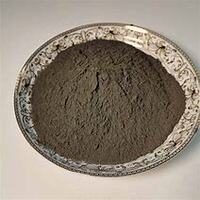1. Introduction
Titanium powder—often referred to simply as ti powder—is far more than just ground-up metal. It’s a high-performance material driving innovation across aerospace, medical implants, defense, and additive manufacturing. But not all titanium powders are created equal. From pure titanium powder to complex alloys like ti64 powder (Ti6Al4V), each variant serves distinct purposes based on its morphology, purity, and production method. In this deep dive, we’ll unpack how titanium powder is made, compare its major types, and explore why prices can swing dramatically—from affordable hdh titanium powder to premium spherical titanium powder for 3d printing.

2. How Is Titanium Powder Made?
2.1 Gas Atomization vs. HDH Process
The two dominant methods for producing titanium metal powder are gas atomization and the hydride-dehydride (HDH) process. Gas atomized titanium powder yields highly spherical particles ideal for 3d printing titanium powder applications. These spheres flow smoothly in powder-bed fusion systems, ensuring consistent layer deposition and dense final parts. In contrast, hdh titanium powder is irregularly shaped and more cost-effective, making it suitable for pressing-and-sintering operations or as a feedstock for further processing.
Gas atomization involves melting titanium under vacuum or inert gas, then blasting the molten stream with high-pressure argon or nitrogen to form fine droplets that solidify mid-air. This method produces clean, low-oxygen, spherical ti powder—but at a higher titanium powder cost. HDH, on the other hand, starts with titanium sponge, which is hydrogenated to become brittle, crushed into powder, and then dehydrogenated. While cheaper, HDH powder often contains higher oxygen levels and angular particles, limiting its use in high-end additive manufacturing.
2.2 Specialty Powders: Beyond Pure Titanium
Beyond standard grades, the market includes advanced formulations like titanium nitride powder, titanium carbide powder, and titanium diboride powder (TiB2). These ceramic-metal composites offer extreme hardness, thermal stability, and wear resistance. TiB2 powder, for instance, is used in cutting tools and armor plating. Similarly, titanium boride powder enhances composite strength in aerospace components.
Other niche variants include tih2 powder (titanium hydride), used as a foaming agent in metal matrix composites, and burnt titanium powder coat residues—though these are byproducts rather than engineered materials. Notably, tio2 powder (titanium dioxide) and tio2 nano powder are chemically distinct; they’re oxides used in sunscreens and pigments, not structural metals.
3. Titanium Powder for Additive Manufacturing

3.1 Why Sphericity Matters
Additive manufacturing demands powders with excellent flowability, packing density, and repeatability—all hallmarks of spherical titanium powder. Irregular hdh powders clog nozzles and create voids, whereas gas-atomized spherical particles ensure uniform melt pools during laser or electron beam melting. This is why titanium powder for 3d printing price points are significantly higher—often $300–$800 per kg depending on alloy and certification.
3.2 Popular Alloys: Ti6Al4V Dominates
Among titanium alloy powders, ti6al4v powder (also called ti64 powder) is the industry standard for 3d printing. It offers an optimal balance of strength, corrosion resistance, and biocompatibility—making it ideal for aerospace brackets and orthopedic implants. The ti6al4v powder price typically runs 20–40% above pure titanium powder due to alloying elements and stricter quality controls.
4. Pricing and Sourcing Considerations
4.1 What Drives Titanium Powder Price?
Titanium powder price per kg varies widely based on purity, particle size distribution, morphology, and production method. Pure titanium powder from HDH may cost $50–$150/kg, while certified spherical ti6al4v powder for aerospace can exceed $700/kg. Factors like batch size, certifications (AMS, ASTM), and supplier location (e.g., international titanium powder from Europe vs. Asia) also impact titanium metal powder price.
Buyers should beware of misleading listings—some vendors advertise ‘titanium powder for sale’ but deliver coarse, oxidized, or non-spherical material unsuitable for critical applications. Always verify specs with your titanium powder supplier.

4.2 Comparison with Refractory Metal Powders
While titanium dominates lightweight high-strength applications, molybdenum powder and tungsten powder serve ultra-high-temperature niches. Molybdenum metal powder (including tzm powder and molybdenum disulfide powder) excels in furnace components and lubricants. Similarly, tungsten powder—especially spherical tungsten powder and tungsten carbide powder—is prized for radiation shielding and wear-resistant coatings.
Molybdenum powder price typically ranges $30–$100/kg, while tungsten powder price per kg can hit $50–$200, depending on purity. Though unrelated chemically, these markets often overlap in procurement channels, with many titanium powder suppliers also distributing moly powder and wolfram powder (another name for tungsten).
5. Safety and Handling Notes
Titanium dust is flammable and can be pyrophoric in fine nanopowder form—especially below 10 microns. Proper handling in inert atmospheres is essential. Unlike tio2 powder (generally recognized as safe in cosmetics), metallic titanium powder requires industrial safety protocols. Never confuse titanium flash powder (a pyrotechnic mix) with engineering-grade ti powder.
6. Conclusion
From gas atomized spherical particles enabling next-gen jet engines to cost-effective hdh powder for sintered parts, titanium powder is a cornerstone of modern advanced manufacturing. Understanding the differences between pure titanium powder, ti6al4v powder, and ceramic derivatives like titanium diboride powder is crucial for selecting the right material. As additive manufacturing grows, so will demand for high-quality titanium 3d printing powder—making informed sourcing from reputable titanium powder suppliers more important than ever.
Our Website founded on October 17, 2012, is a high-tech enterprise committed to the research and development, production, processing, sales and technical services of ceramic relative materials such as How. Our products includes but not limited to Boron Carbide Ceramic Products, Boron Nitride Ceramic Products, Silicon Carbide Ceramic Products, Silicon Nitride Ceramic Products, Zirconium Dioxide Ceramic Products, etc. If you are interested, please feel free to contact us.
